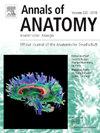Mathematical definition and rules of the splitting/merging patterns in bundles of human peripheral nerve segment
Abstract
Accurately measuring the spatial extension distance of nerve bundles in completing a split/merge is impossible because no clear mathematical definition exists for the starting and ending positions in nerve-bundle splitting/merging. We manually count the number of nerve-bundle splits/merges in long nerve segments, which is labor-intensive, inefficient, and prone to counting errors. Currently, the mathematics are unclear for the nerve-bundle diameter before and after splitting/merging. This paper explores these problems and proposes nerve-bundle splitting/merging rules. Based on the method of defining the beginning and ending positions of nerve-bundle splitting/merging, we explored the mathematical law of equivalent diameter of nerve bundles before and after splitting/merging. The experimental results revealed that the moving average of circularity of nerve bundle accurately defines the beginning and ending positions of nerve-bundle splitting/merging. The diameter of the nerve bundles before and after split/merge approximately conforms to the principles of the Da Vinci formula. The proposed automatic counting algorithm based on centroid offset matching obtains the number of split/merged nerve bundles in the sequence scan images with 100 % accuracy. The mathematical definition of the starting and ending positions of nerve-bundle splitting/merging proposed in this paper is accurate and strict and is the foundation of subsequent research. The proposed automatic counting algorithm based on centroid offset matching (ACA-COM) can accurately and efficiently count the number of times the nerve bundles split and merge in sequential images. The mathematical law satisfied by the diameter of the nerve bundles before and after splitting/merging reflects that the nerve bundles tend to have better capability to resist breaking.

 求助内容:
求助内容: 应助结果提醒方式:
应助结果提醒方式:


